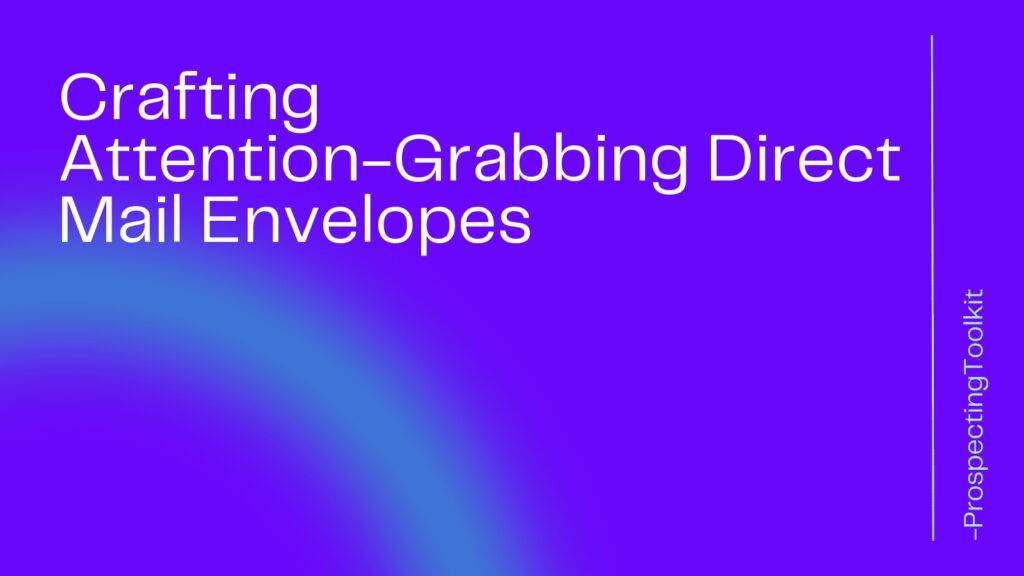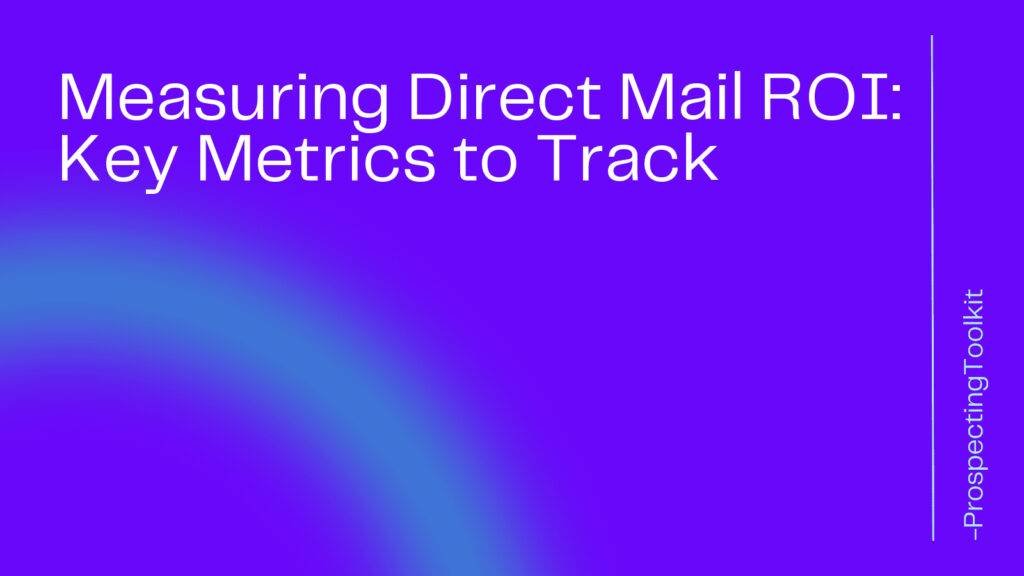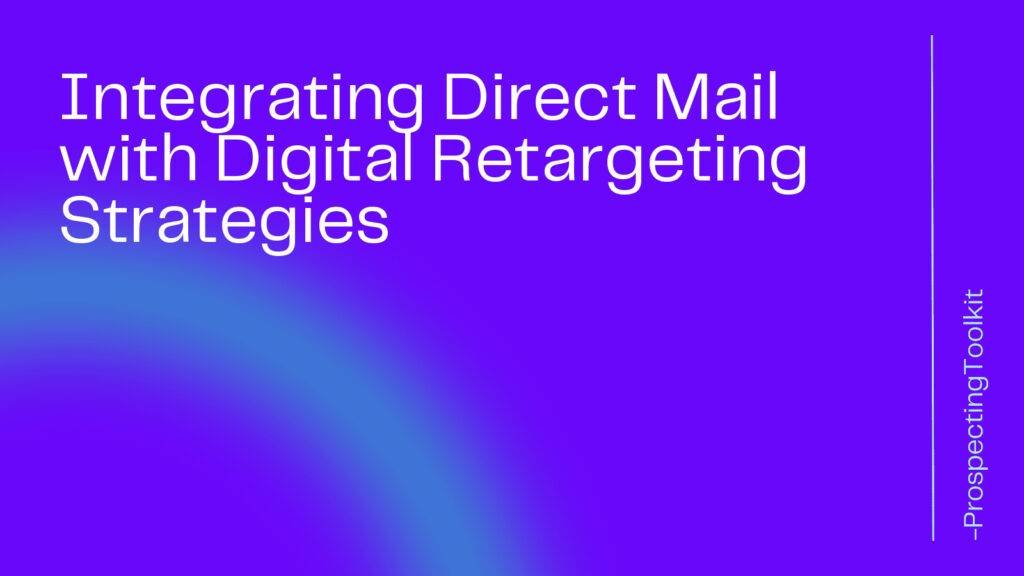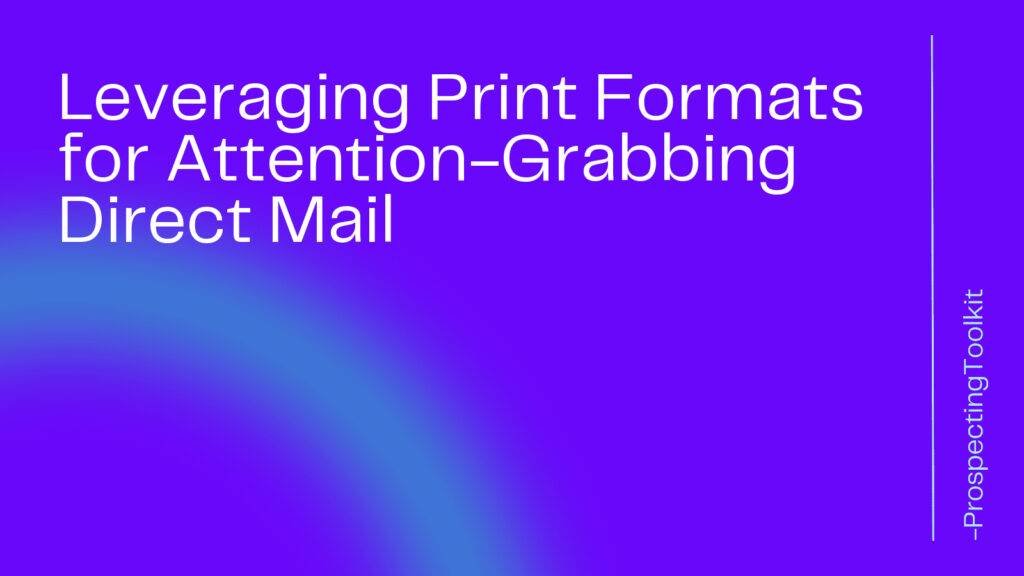In today’s digital age, networking and establishing professional connections have taken on a new form through social media platforms such as LinkedIn.
With over 722 million users worldwide, it has become an essential tool for businesses and professionals to connect, generate leads, and close potential clients.
One of the most efficient ways to reach out to potential clients on LinkedIn is through InMail, the platform’s direct messaging feature.
However, many struggle with crafting an effective InMail that can turn prospects into clients. In this article, we will discuss the strategies and techniques on how to close clients with LinkedIn InMail, allowing you to maximize the potential of this powerful tool.
Whether you are a business owner, salesperson, or aspiring professional, mastering the art of InMails can significantly impact your success in acquiring new clients and expanding your network.
So, let’s dive in and uncover the best practices for utilizing LinkedIn InMail effectively and efficiently.
Table of Contents
ToggleRequirements for LinkedIn InMail
To send LinkedIn InMail messages, you must have a Premium LinkedIn account.
You can also send InMail messages if you are connected to the person you are sending the message to, regardless of your account type.
Here are the other requirements for sending LinkedIn InMail messages:
- The recipient must have a LinkedIn profile.
- The recipient must not have disabled InMail messages in their privacy settings.
- The recipient cannot have blocked you.
- You cannot send InMail messages to people who are not in your network, unless you have a Sales Navigator Core or Advanced account.
You can send up to 20 InMail messages per month with a Sales Navigator Core account, and up to 100 InMail messages per month with a Sales Navigator Advanced account.
If you have a Premium Career or Premium Business account, you can send up to 5 InMail messages per month.
Personalize your InMails for success.
Now that you understand the importance of LinkedIn InMail and how it can help you reach potential clients, let’s dive into the key to success – personalization.
Gone are the days of generic, robotic messages that get lost in a sea of other InMails.
In order to stand out and make a lasting impression, you need to personalize your InMails.
Personalization shows that you have taken the time to research and understand your target audience, making it more likely for them to respond positively to your message.
Start by addressing the recipient by their name and referencing something specific about their profile or recent activity.
This will not only grab their attention, but also make them feel valued and more likely to engage with you.
Remember, a little personal touch can go a long way in building successful connections through LinkedIn InMail.
Craft compelling subject lines that intrigue.
Once you’ve personalized your LinkedIn InMail message and addressed your recipient by name, it’s time to focus on crafting a compelling subject line.
This is your chance to pique their curiosity and entice them to open your message.
After all, what good is a personalized message if it never gets read?
So, how do you come up with a subject line that intrigues? It’s all about being creative and thinking outside the box.
Consider using a question, a bold statement, or a teaser that leaves your recipient wanting more.
Just like a good book or movie, a great subject line should leave your audience wanting to know more.
So, get those creative juices flowing and come up with a subject line that will make your recipient eager to click “open”.
Think of your subject line as the first impression you make on your potential client. It’s your chance to make a charming and intriguing introduction that will set the tone for the rest of your message.
So, take the time to craft a subject line that will grab their attention and make them want to learn more about what you have to offer.
Don’t be afraid to test out different subject lines and see which ones garner the best response.
Remember, a well-crafted subject line can be the key to successfully closing clients through LinkedIn InMail.
Be genuine and build rapport.
One of the key factors in successfully closing clients through LinkedIn InMail is being genuine and building rapport.
It’s not enough to just have a catchy subject line or a well-crafted message; you also need to establish a connection with the recipient.
This means being authentic and sincere in your approach.
Don’t try to be someone you’re not or use generic templates.
Instead, take the time to understand the person you’re reaching out to and tailor your message accordingly.
Building rapport is all about finding common ground and making a genuine connection, and this can go a long way in getting a positive response from potential clients.
Remember, people want to do business with people they like and trust.
So, be yourself and let your personality shine through in your InMail messages. Share personal anecdotes or interests that you have in common with the recipient, and don’t be afraid to inject a bit of humor or charm.
This will not only make your message stand out but also create a sense of familiarity and trust.
Building rapport is an essential step in the process of closing clients, and by being genuine and personable, you can greatly increase your chances of success.
So, take the time to establish a connection with your prospects and watch as your InMail responses and client conversions soar.
Showcase your expertise and value.
One of the most effective ways to close clients through LinkedIn InMail is by showcasing your expertise and value.
This means highlighting your unique skills, experiences, and achievements that set you apart from others in your industry.
By doing so, you are not only establishing yourself as an authority in your field but also demonstrating the value you can bring to potential clients.
But it’s not just about listing your credentials and accomplishments.
It’s about showcasing them in a way that is genuine and relatable. Share stories or examples that illustrate your expertise and how it has helped others.
This not only adds a personal touch but also allows the recipient to envision how your skills and knowledge can benefit them.
Remember, people are more likely to do business with someone they know, like, and trust, so don’t be afraid to let your personality shine through in your messages.
By showcasing your expertise and value in a genuine and charming way, you can significantly increase your chances of closing clients through LinkedIn InMail.
Offer a tailored solution they need.
One of the most important things to consider when reaching out to potential clients on LinkedIn is to offer a tailored solution that directly addresses their specific needs.
This means taking the time to thoroughly research their company and industry, and understanding the challenges they may be facing.
By doing so, you can position yourself as a valuable resource who not only understands their pain points but also has the expertise and skills to provide a customized solution.
So, instead of sending a generic message that simply lists your services, take the time to personalize your InMail and offer a tailored solution that directly addresses the client’s needs.
This could be in the form of a personalized recommendation or a specific strategy that you believe would benefit their business.
By doing so, you are not only showcasing your expertise and value, but also demonstrating your genuine interest in helping them succeed.
Remember, personalized solutions are often more effective in capturing the attention and interest of potential clients.
Keep your messages concise and clear.
Another key element to consider when reaching out to potential clients through LinkedIn InMail is the length and clarity of your message.
Remember, your goal is to catch their attention and pique their interest, not bog them down with a lengthy sales pitch.
Keeping your messages concise and clear is essential in making a strong first impression and showing that you value their time.
A cluttered or confusing message may cause the recipient to lose interest or even delete your message without reading it fully.
In addition, clear communication is crucial in building trust and credibility with potential clients.
If your message is filled with industry jargon or vague language, it may come across as insincere or unprofessional. Instead, aim to use simple and direct language that clearly conveys your intentions and expertise.
By doing so, you will not only make a good impression, but also increase the chances of closing the deal and building a successful business relationship.
So remember, always keep your messages concise and clear when reaching out to potential clients through LinkedIn InMail.
Use a friendly and approachable tone.
Creating a friendly and approachable tone in your LinkedIn InMail messages can greatly improve your chances of closing clients.
People are more likely to respond positively when they feel like they are talking to a friend rather than being sold to.
So, instead of using overly formal language or industry jargon, try to keep your messages conversational and relatable.
This will make you seem more personable and genuine, which can help build trust and establish a connection with potential clients.
Remember, when using LinkedIn InMail to reach out to potential clients, you are essentially introducing yourself and your business.
So, it’s important to make a good first impression.
Using a friendly and approachable tone shows that you value the person’s time and are genuinely interested in establishing a business relationship with them. It also makes your message more engaging and memorable, increasing the chances of getting a response.
So, don’t be afraid to let your personality shine through and make a genuine connection with potential clients.
Follow up, but don’t pester.
Now that you’ve crafted the perfect InMail message with a charming tone, it’s time to think about the follow-up.
While it’s important to stay persistent and keep in touch with potential clients, it’s equally important to not come across as a pest.
As the saying goes, “the squeaky wheel gets the grease,” but no one likes a wheel that squeaks too much.
So, follow up, but don’t pester.
The key to striking this balance is to be mindful of the frequency and tone of your follow-up messages.
A good rule of thumb is to follow up no more than twice after your initial message, spaced out by a week or two. And when you do follow up, make sure to maintain the friendly and approachable tone you used in your first message.
Remember, you want to build a relationship with potential clients, not annoy them.
So, be polite, understanding, and show genuine interest in their needs and goals.
This will demonstrate your professionalism and increase your chances of closing clients through LinkedIn InMail.
Leverage social proof to build trust.
One way to increase your chances of closing clients through LinkedIn InMail is by leveraging social proof to build trust. Social proof is the phenomenon where people are more likely to trust and follow the actions of others.
This can be seen in the form of testimonials, reviews, or even the number of connections and endorsements on a LinkedIn profile.
By including social proof in your InMail messages, such as mentioning a satisfied client or a successful project, you are showing potential clients that others have had a positive experience working with you. This can help establish credibility and trust, making it easier for potential clients to say yes to your offer.
Another way to use social proof to build trust is by showcasing your expertise and industry knowledge. This can be done through sharing relevant articles or blog posts on your LinkedIn profile or in your InMail messages.
By positioning yourself as a thought leader in your field, you are demonstrating your expertise and building trust with potential clients.
They will be more likely to see you as a reliable and knowledgeable source, increasing the chances of them wanting to work with you.
So don’t be afraid to share your knowledge and showcase your expertise – it could be the key to closing clients through LinkedIn InMail.
Close with a confident call-to-action.
Ready to take your LinkedIn InMail game to the next level?
With the power of social proof and industry knowledge, you’re already well on your way to closing more clients through this powerful platform.
But don’t forget the final piece of the puzzle – a confident call-to-action. This is your chance to seal the deal and convert those potential clients into paying customers.
So what should your call-to-action look like? It all depends on your specific goals and target audience.
But remember to keep it clear, concise, and confident.
Whether it’s asking for a call or a meeting, or inviting them to try out your product or service, make it easy for them to say yes.
And with the right combination of social proof, industry knowledge, and a killer call-to-action, you’ll be closing clients with LinkedIn InMail like a charm in no time.
LinkedIn InMail Template
Hi [Prospect Name],
I hope this message finds you well.
My name is [Your Name] and I’m a [Your Job Title] at [Your Company]. I’m reaching out to you today because I believe that our [Product or Service] can help you achieve your goals at [Prospect Company].
I’ve noticed that you’re a [Prospect Job Title] at [Prospect Company], and I’m curious to learn more about your specific challenges and goals. I’m confident that we can help you [Benefit of Your Product or Service], and I’d love to schedule a brief call to discuss this further.
I’m available for a call on [Date] at [Time] or [Date] at [Time]. Please let me know if either of those times work for you. Otherwise, please suggest a time that works for you.
Thanks, [Your Name]
This template is short and to the point, and it personalizes the message by mentioning the prospect’s job title and company.
It also includes a clear call to action, which is to schedule a meeting.
Here are some additional tips for sending cold InMail messages:
- Keep your messages short and to the point. Busy people don’t have time to read long emails.
- Personalize your messages as much as possible. Mention the prospect’s name, job title, and company.
- Be clear about what you want. Do you want to schedule a meeting? Start a trial? Make a sale? State your goal clearly in your call to action.
- Proofread your messages carefully before sending them. Typos and grammatical errors make you look unprofessional.
FAQ
What are some effective strategies for crafting a compelling LinkedIn InMail message to close potential clients?
Crafting a compelling LinkedIn InMail message to close potential clients requires a few effective strategies. Firstly, personalize the message by referencing the recipient’s profile and highlighting common interests or connections. Secondly, clearly articulate the value or benefit your product or service offers and how it can solve their specific problem or meet their needs. Thirdly, establish credibility by showcasing relevant experience or success stories. Fourthly, keep the message concise and to the point, focusing on the recipient’s key pain points. Lastly, include a clear call to action, such as scheduling a call or meeting, to prompt a response and initiate further conversation.
How can you personalize your LinkedIn InMail messages to make them more engaging and increase your chances of closing clients?
To personalize your LinkedIn InMail messages and increase your chances of closing clients, it’s important to do some research on the individual you’re reaching out to. Start by mentioning something specific from their profile or recent activity to show that you’ve taken the time to learn about them. Be concise and direct in your message, clearly stating what you can offer and how it can benefit them. Use a friendly and conversational tone to establish a connection. Adding a personal touch, such as mentioning a common interest or mutual connection, can also make your message more engaging and memorable.
Are there any specific LinkedIn InMail features or tools that can help in closing clients more effectively?
Yes, LinkedIn InMail offers several features and tools that can help in closing clients more effectively. One such feature is personalized messaging, which allows you to tailor your InMail messages to each individual client, increasing the chances of a positive response. InMail also provides read receipts, allowing you to see if your message has been read, providing insights into client engagement. Additionally, LinkedIn Sales Navigator, a premium tool, offers advanced search filters and lead recommendations, helping you identify and target potential clients more effectively. Overall, utilizing these features and tools can enhance your communication and targeting strategies, leading to more successful client closures.
What are some common mistakes to avoid when using LinkedIn InMail to close clients, and how can you overcome them?
Some common mistakes to avoid when using LinkedIn InMail to close clients include sending generic or irrelevant messages, not personalizing the message to the recipient, and focusing too much on the sale instead of building a relationship. To overcome these mistakes, it is important to research the recipient and tailor the message to their specific needs and interests. Additionally, focusing on building a relationship by offering value, sharing relevant insights, and asking thoughtful questions can help establish trust and increase the chances of closing the client successfully.
How can you measure the success of your LinkedIn InMail campaigns in terms of closing clients, and what metrics should you track?
To measure the success of your LinkedIn InMail campaigns in terms of closing clients, you can track several key metrics. Firstly, monitor the open rate to gauge the effectiveness of your subject lines and entice recipients to read your message. Secondly, track the response rate to measure the engagement level and the quality of your messaging. Additionally, monitor the conversion rate, which represents the number of InMails that led to closed deals. Analyzing these metrics will provide insights into the effectiveness of your campaigns and help you optimize your approach to achieve better client conversion rates.
Conclusion
And there you have it, my charming friends: a few tips and tricks on how to successfully close clients with LinkedIn InMail.
Remember, the key is to personalize your message, be genuine and build a relationship before pitching your services.
With these strategies, I have no doubt that you’ll be closing deals left and right in no time.
So go forth and charm your way to success on LinkedIn!







